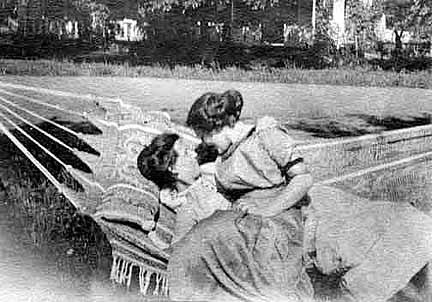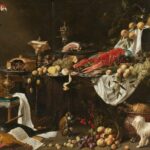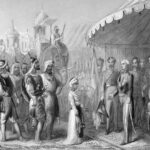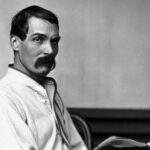Historical Same-Sex Couples That Prove Homosexuality Is Nothing New
- Jennifer Still
- May 18, 2025
 Public Domain
Public DomainDespite what some might claim, same-sex love is anything but a modern invention. Long before Pride parades, civil partnerships, or LGBTQ+ rights movements, people were forming romantic, sexual, and emotional bonds with others of the same sex. Sometimes they were celebrated, sometimes they were hidden, and sometimes they were condemned, but they were always there. Across centuries, cultures, and social classes, couples lived together, travelled together, and in many cases risked everything to be with one another. Their stories cut through the revisionist history that pretends queer love is a new or fleeting phenomenon. Here are just some of the historical same-sex couples who prove that love between men and between women has always been part of our shared human experience.
Hadrian and Antinous
Roman Emperor Hadrian and his beloved Antinous have come to symbolise one of the most famous queer relationships of antiquity. Antinous was a Greek youth who accompanied Hadrian on imperial tours across the empire. Their bond was deeply personal, and Hadrian’s grief at Antinous’s death in 130 CE by drowning in the Nile was profound.
In the wake of the tragedy, Hadrian ordered statues to be made in Antinous’s likeness, established religious cults in his honour, and even founded a city, Antinopolis, on the Nile near where he died. The scale of mourning and memorial was usually reserved for gods and emperors. This wasn’t just a case of a favourite court companion; it was something much deeper, publicly acknowledged and permanently inscribed in Roman art and architecture.
Khnumhotep and Niankhkhnum
Dating back to around 2400 BCE, Khnumhotep and Niankhkhnum were royal manicurists in the Egyptian court of Pharaoh Nyuserre. Their tomb, discovered at Saqqara, features images of the two men embracing, standing nose to nose—a pose traditionally reserved for husbands and wives in Egyptian iconography.
Some scholars suggest they were brothers, but the evidence in their joint burial, affectionate depictions, and shared titles suggests something more. Even if the exact nature of their relationship can’t be fully confirmed, it’s clear they were considered a lifelong pair, and their tomb provides one of the oldest possible representations of a same-sex couple in recorded history.
Sappho and her lovers
Sappho, the iconic poet from the island of Lesbos, lived in the 6th century BCE and is widely regarded as one of the earliest voices of female same-sex desire. Her poetry speaks openly of love, longing, and intimacy between women. Though much of her work survives only in fragments, what remains is enough to establish her legacy.
She ran a kind of cultural and educational retreat for young women, and while there’s debate about whether it was formal schooling or something more informal, it’s clear that relationships developed within this setting. The word “sapphic” and the term “lesbian” (derived from Lesbos) speak to her lasting cultural impact, rooted in her deeply emotional and romantic depictions of women loving women.
Alexander the Great and Hephaestion
Alexander the Great was rarely alone, and his constant companion was Hephaestion, a fellow Macedonian noble and trusted military commander. The two grew up together, studied under Aristotle, and shared battlefield victories—and, many believe, romantic intimacy.
When Hephaestion died suddenly, Alexander was inconsolable. He reportedly refused food, cut his hair in mourning, and demanded a hero’s funeral. He even sent messengers to consult oracles about Hephaestion’s divine status. While ancient sources don’t spell out a sexual relationship in modern terms, the depth of emotional attachment suggests they were far more than friends.
James VI of Scotland and George Villiers
King James VI of Scotland, who later became James I of England, maintained an intensely close, and possibly romantic, relationship with George Villiers, who would become the Duke of Buckingham. The two exchanged affectionate letters in which James referred to Villiers as his “sweet child and wife,” his “earthly delight,” and even declared, “I desire only to live in this world for your sake.”
Although some historians have tried to explain the relationship as simply courtly affection, many now acknowledge that James’s words, and the political power he gave Villiers, suggest something much deeper. Their connection challenged early modern expectations of masculinity and monarchy.
Eleanor Butler and Sarah Ponsonby (The Ladies of Llangollen)
In the late 18th century, two Irish women, Eleanor Butler and Sarah Ponsonby, eloped together to avoid being married off to men. They settled in a cottage in Llangollen, Wales, where they lived together for over 50 years.
They became well-known throughout Britain and were visited by literary figures, aristocrats, and even royalty. While they never described their relationship in explicitly romantic terms, they built a life together that mirrored a marriage in everything but name. Their choice to prioritise each other, at the expense of social convention, has led many to view them as early lesbian icons.
Michelangelo and Tommaso dei Cavalieri
Michelangelo, one of the greatest artists of the Renaissance, formed a deep attachment to a young Roman nobleman named Tommaso dei Cavalieri. The artist dedicated dozens of sonnets and drawings to him, full of longing, admiration, and passion.
Though it’s unclear whether their relationship was ever physical, Michelangelo’s letters reveal an intensity of feeling and romantic desire that goes beyond platonic admiration. In a time when homosexuality was not only taboo but criminal, Michelangelo expressed his affections through metaphor, art, and the carefully worded lines of his poetry.
Gertrude Stein and Alice B. Toklas
Gertrude Stein, an American writer and art collector, spent much of her adult life in Paris with her partner Alice B. Toklas. They were inseparable for nearly 40 years, and their home became a salon for artists and thinkers including Picasso, Hemingway, and Matisse.
Stein openly referred to Toklas as her “wife,” and their private relationship was an open secret among their social circle. After Stein’s death, Toklas continued to honour their partnership and documented their life together in memoirs. Their bond was domestic, intellectual, romantic, and enduring.
Anne Lister and Ann Walker
Anne Lister, a wealthy landowner and diarist from Yorkshire, kept detailed journals—much of them in code—about her life, business dealings, and romantic relationships with women. In 1834, she and her partner Ann Walker took communion together, regarding it as a symbolic marriage.
Their story was rediscovered in the 20th century when Lister’s diaries were finally decoded, revealing an unapologetic life of same-sex love at a time when it was barely spoken of in public. The BBC drama “Gentleman Jack” helped bring their story to a wider audience, turning Lister into a celebrated figure of queer history.
Natalie Clifford Barney and Renée Vivien
In early 20th-century Paris, writer and socialite Natalie Clifford Barney carried on several same-sex relationships, most famously with the British poet Renée Vivien. Their intense romance was marked by passion, poetry, and heartbreak.
Barney’s home became a haven for queer creatives, where she hosted salons and advocated for free love and visibility. She lived openly as a lesbian at a time when few dared, and her relationships, particularly with Vivien, helped shape early 20th-century lesbian identity in European art and literature.
Queer love has always existed, even when history tried to erase it. From ancient emperors to Romantic-era rebels, these couples remind us that same-sex relationships aren’t modern anomalies—they’re part of the human story. Some were hidden in plain sight, some whispered in letters or carved into tomb walls, and some lived out loud despite the risks. But all left traces behind that speak to enduring love, chosen partnership, and lives lived on their own terms. Their stories offer powerful reminders that queer history is real history, and it deserves to be told in full.



